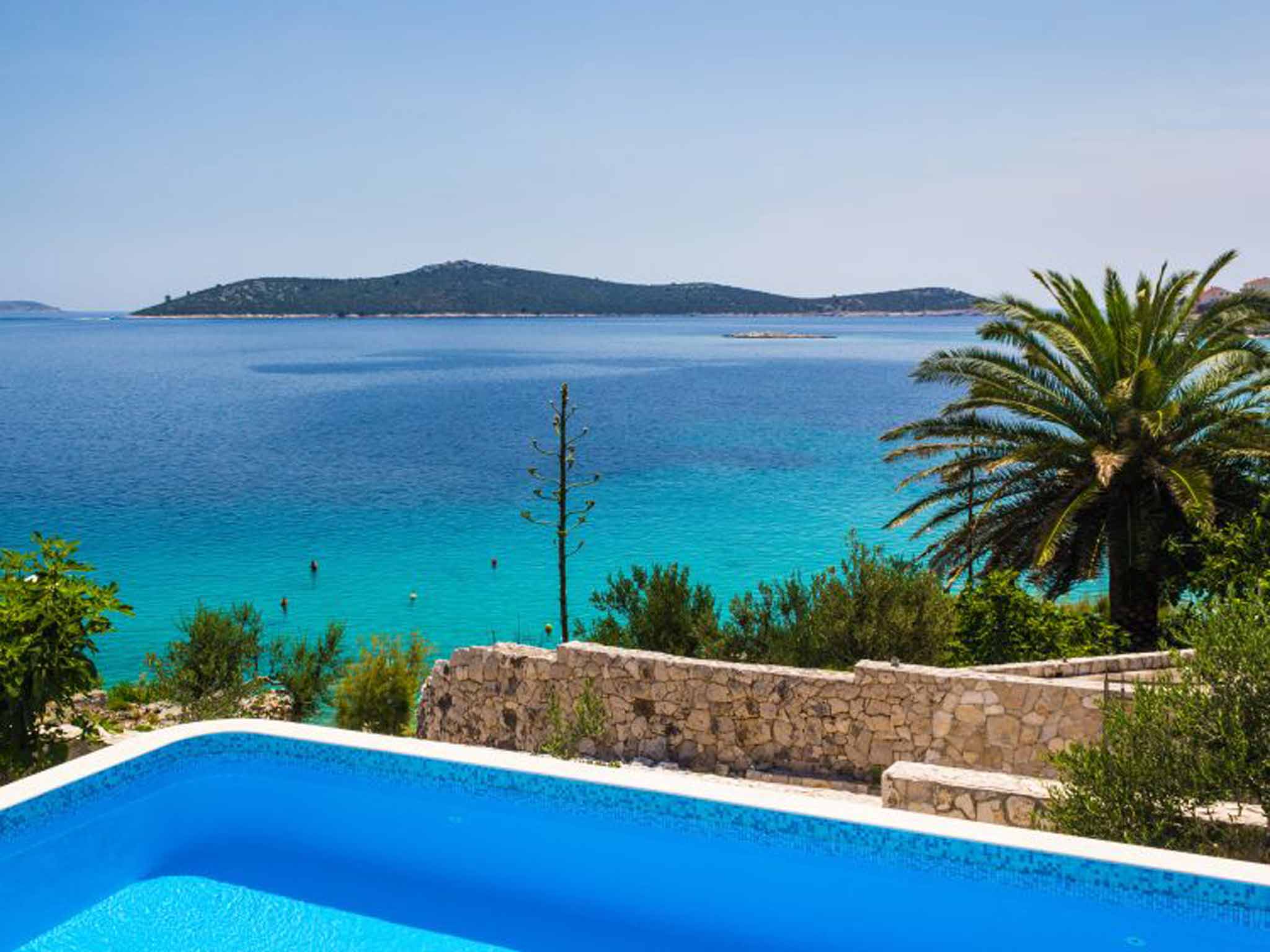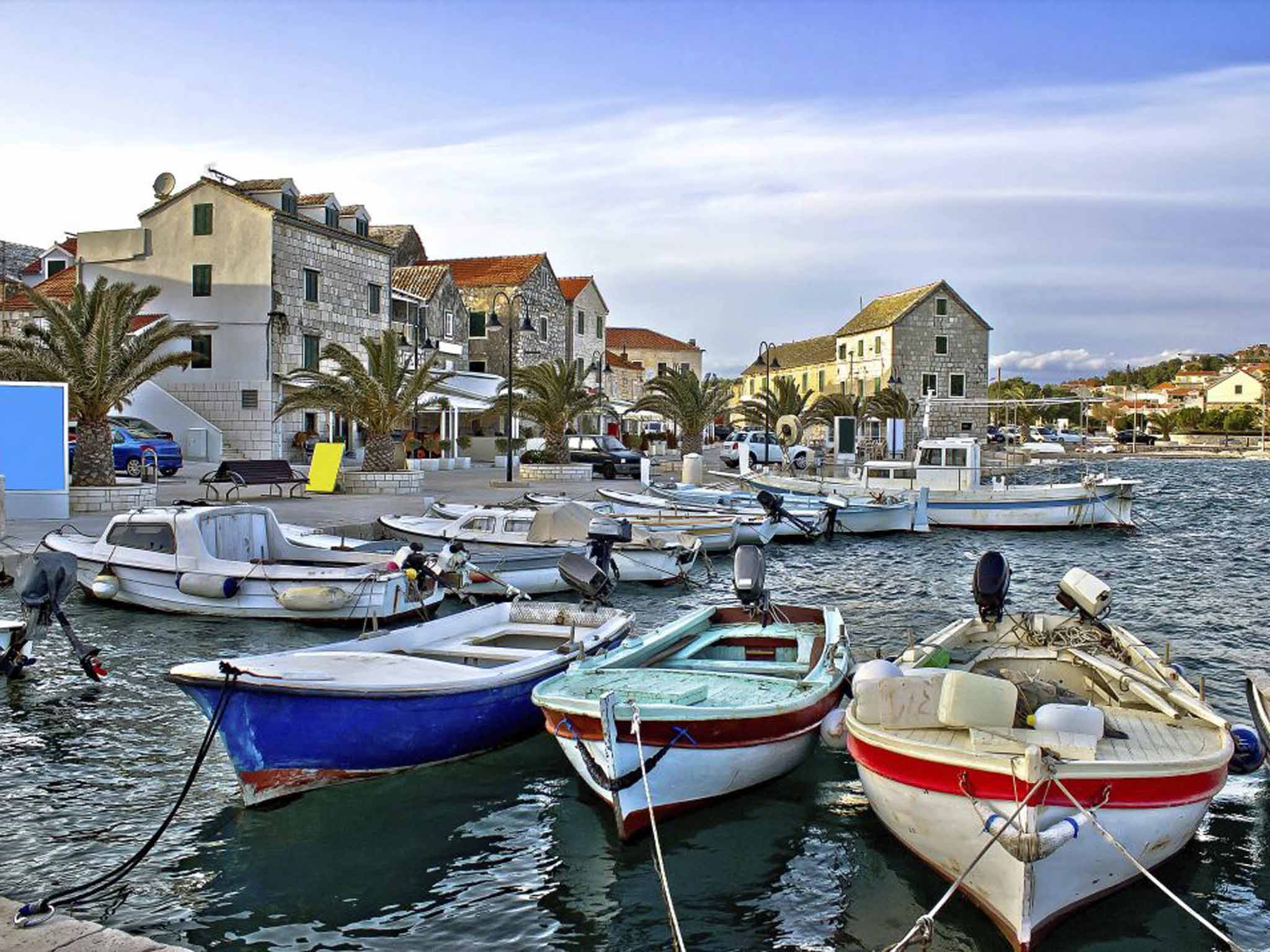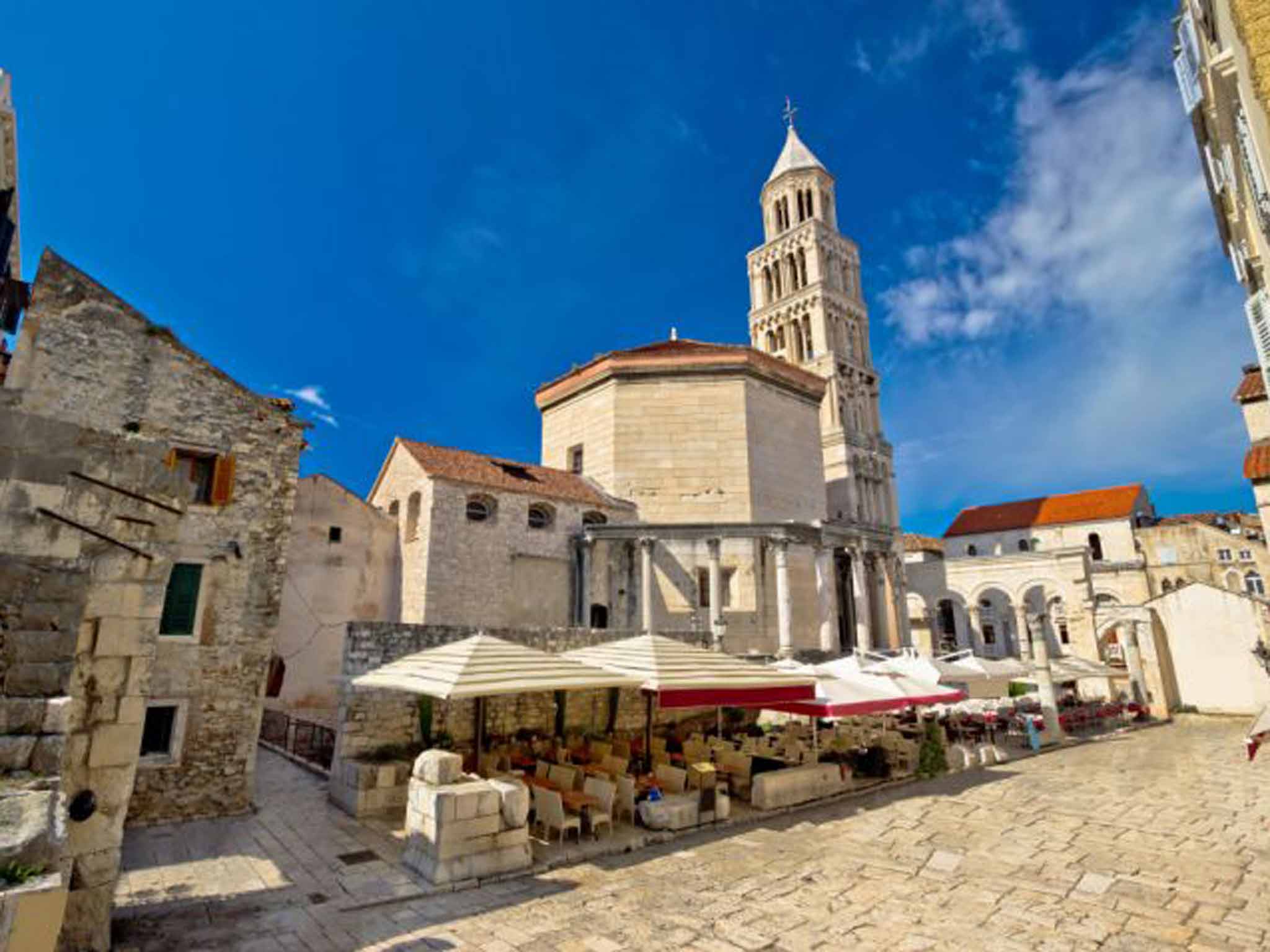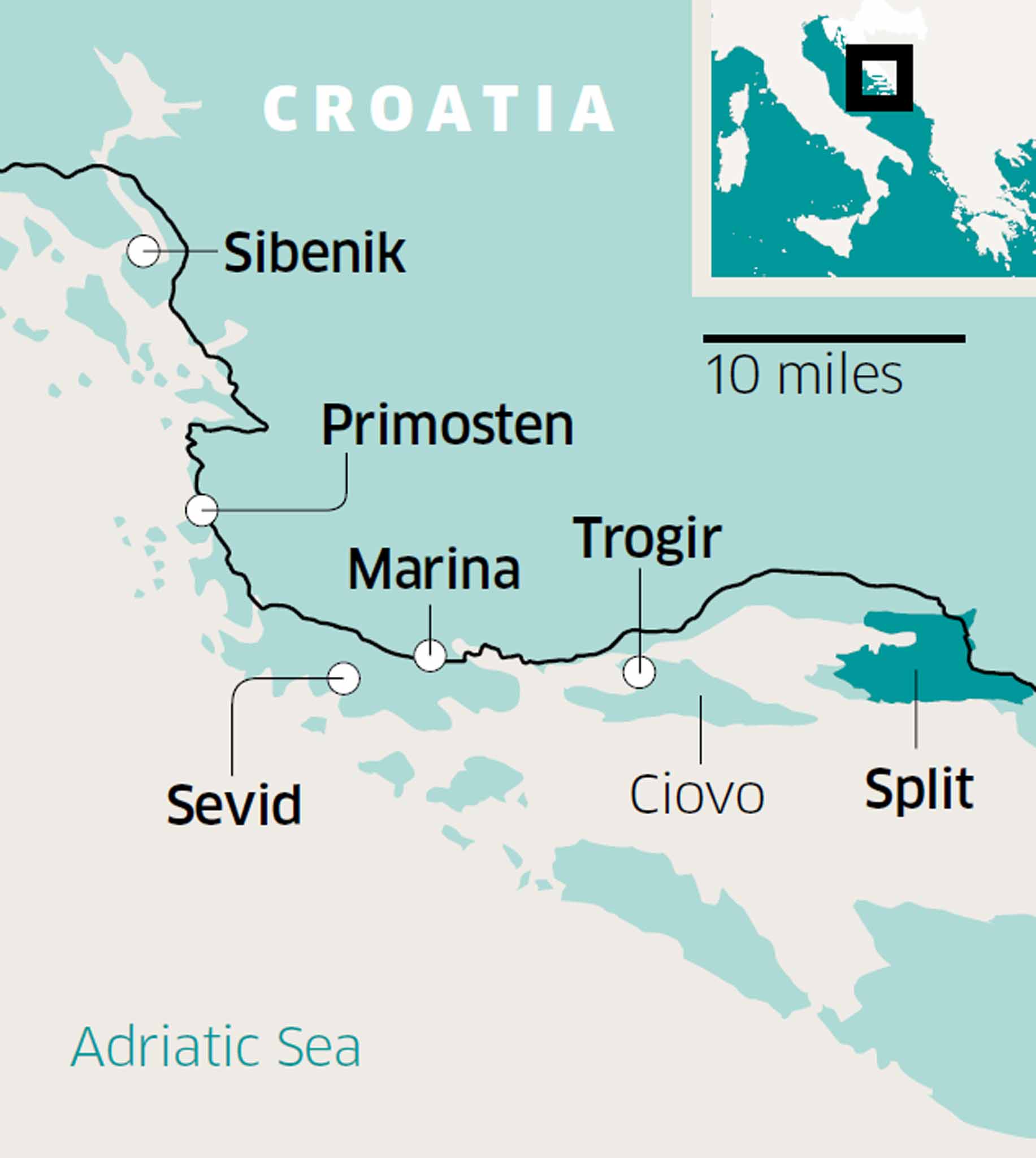Croatia’s Dalmatian Coast: From Sevid to Split
Time appears to have stood still in the Dalmatian village of Sevid, while development continues apace all around it. Sankha Guha attempts to solve the mystery

Your support helps us to tell the story
From reproductive rights to climate change to Big Tech, The Independent is on the ground when the story is developing. Whether it's investigating the financials of Elon Musk's pro-Trump PAC or producing our latest documentary, 'The A Word', which shines a light on the American women fighting for reproductive rights, we know how important it is to parse out the facts from the messaging.
At such a critical moment in US history, we need reporters on the ground. Your donation allows us to keep sending journalists to speak to both sides of the story.
The Independent is trusted by Americans across the entire political spectrum. And unlike many other quality news outlets, we choose not to lock Americans out of our reporting and analysis with paywalls. We believe quality journalism should be available to everyone, paid for by those who can afford it.
Your support makes all the difference.All good thrillers should begin with a phone call. I've just landed in Split. The voice at the other end of my mobile is gratifyingly sinister – Slavic accented, deep and terse. "We've been expecting you Mr Guha". Ok, he doesn't use those precise words. More like, "Take coast road west towards Trogir. Turn left from Route 8 after Marina. When you reach Sevid village, stop at bend in road after church. You will be met." The phone goes dead.
It's a flawless day. My car winds along lanes edged with dry stone walls. It's early season, the Mediterranean flora is still verdant and has yet to take on the bleached hues of late summer. I drive past the church and the road takes a sharp curve to the left. A black car is waiting. The platinum blonde within gestures for me to follow.
Another five minutes and I round a corner on to a delicious view. The Dalmatian coast is spotty. Inlets, islands, small bays, large bays reach out to sea and double back on themselves – a patchwork of land and water. In the distance a low-rise straggle of whitewashed villas with terracotta roofs follows the curve of Sevid's bay out to a headland – an "almost island" in the shape of a cloven hoof. The water is sparkling, shading from turquoise near the shore to deeper aquamarines further out. All is tranquil. Too tranquil. Something doesn't add up.
We turn on to a track that's little more than a stream of poured concrete running down the hillside. It's a bumpy ride. After a few more twists and turns, we pull up by the iron gate of a villa. My pathfinder ushers me in and hands over the keys. I have questions. We are less than half an hour from Split and its international airport – why is this idyllic spot so sleepy? Where are the holidaymaking hordes? But before I have a chance to gather my wits, she's gone.

I should confess that the sinister voice on the phone belonged not to one of Ernst Stavro Blofeld's sons but to Nikola – the owner of the villa. And the blonde is his wife, Daniela. But I am still left struggling with the Mystery of Sevid.
The villa itself occupies a grandstand position overlooking the bay. The terraces on both the first and ground floors make the most of the views. The interior is comfortable without being ostentatious – more of a weekend family home than a magnate's palace.
The pool (one of only two in the locality I later learn) occupies pride of place in front of the house, leading the eye on to the greater expanse of the sea beyond. The steps and platforms around the pool have no handrails or safety gates, which brings out the health and safety inspector in me.
There is something wonderfully unfinished about Sevid. The absence of resort clutter is striking. The "beach" a few yards in front of the villa consists of a series of concrete platforms – their stark severity marginally mitigated by a scattering of sun loungers. Further up the causeway there is a sandy stretch but no promenade. The beach ends abruptly at the garden walls of holiday homes. There are no waterfront bars, no souvenir kiosks, not even a café. Eventually I find a small grocery store and a rather lumpen pizza parlour in a back street. And that's the bright lights of Sevid done.
Luckily, the roadside gostionica (barbecue restaurants) are a fast-food feature of the area. The Tivoli, on the main highway from Marina to Sibenik, is a short drive away. It's blazingly hot as we park and make our way to the terrace. Tivoli is evidently popular, with local families up to their elbows in promising greasy cuts.
We wait for our takeaway lamb on the terrace. There is thunder in the air and the distant roar gets steadily louder until the air is throbbing. It turns out to be a touring Harley-Davidson club. No sooner have they passed than a real storm brews. Thunder and lighting appear from nowhere and the sky goes black. Within seconds the deluge is upon us. The gutters are overflowing and huge salvos of water slam out of the sky like shrapnel. Safe under the rattling tin roof I enjoy a moment of schadenfreude, picturing the leather knights on their Harleys getting battered sideways down the road.
The takeaway duly appears and the storm passes as quickly as it arrived. There are rivers running down the road. However, as we make our way back to the coast it seems a miracle has occurred. Within a mile, over the hills, the roads are baking dry. The biblical storm was so pinpoint that a few hundred yards away there's not even a wisp of cloud to disturb the Mediterranean idyll.
About 30 minutes up the coast, Primosten offers a teasing contrast to the soporific pace of Sevid. Both resorts are perched on slight hillocks connected to the mainland by a narrow causeway, but there the similarity ends. Primosten spills down the hill untidily from the bell tower of the 1485 St George's church. On the sunset-facing west side is an elegant paved promenade offering sublime views along the Dalmatian coast and islands. There are cafés, souvenir emporia and beach bars. There is even a Butlin's-style, Tito-era, workers' fun palace on the other side of the lovely horseshoe bay, thumping out Euro house anthems, thankfully at a discreet volume. The quayside is buzzing with diners, chattering in the many tongues of Europe. In short – here is life.

Back at the villa there is no noise of human origin. But there is entertainment. A thrilling aerial ballet arcs through the air as swifts, house martins and swallows line up to skim the surface of the pool picking off stranded insects. After sunset, there is a change of shift: the birds are replaced by bats, silent and barely discernible against the night. Moonbeams glitter on the sea, interrupted by the island of Arkandel, which forms a natural breakwater across the mouth of the south-facing bay. The darkness thickens around the silhouette of the headland – as does the plot. Why is Sevid snoozing while, just up the coast, Primosten parties?
Not just Primosten. Split, in the opposite direction, is also just 30 minutes away – the bright-lights, big city of the region. Its primary attraction is the extraordinary Diocletian's Palace. Sprawling across 30,000 square metres, the citadel is a living museum (3,000 people do in fact live here) following the grid outlines of the Roman emperor's original palace. Now it's a mash-up of old stone from every period – Roman ruins, Romanesque towers, gothic this and baroque that. It's the kind of place where you find yourself casually leaning on a 3,500-year-old Egyptian sphinx – one of three left lying around in the streets.
If it's history you want, there's an embarrassment of riches. Trogir is another gem. The island town is separated from the mainland by a narrow canal and is itself a stepping stone to the much larger island of Ciovo. A long, messy Mediterranean history of conquest and destruction is attached – but the cute lanes, civic buildings, piazzas and churches all scream of Venice, which ruled from 1420 for nearly 400 years. Unsurprisingly, the Unesco World Heritage site has served as a body double for the Venetian Republic in Doctor Who and as a generic medieval cityscape for Game of Thrones among its many screen credits.
But the movie that keeps replaying in my head is the Mystery of Sevid. The more I discover of the area, with its world heritage sites and outstanding coastal beauty, the more improbable Sevid seems – preternaturally immune to the encroachment of tourism.
I get my break when I go looking for the Lanterna restaurant. We've been led to believe the establishment exists but attempts to find it have led to a number of dead ends. Misdirections from well-meaning locals and an almost contemptuous lack of signage are to blame. One final push in the mini-maze of coastal tracks leads us down an impossible gradient to a secluded bay – and there it is.
Lanterna gets it business from the water, which explains why the owner, Jere Silber, is so relaxed about the signposting on land. A breeze is blowing in from the sea, ruffling the sun shades at the tables on the terraces. A couple of small yachts bob about on the swell a few metres off shore, and a few kids are splashing around the restaurant's concrete jetty. It's a soothing snapshot of the Mediterranean as it used to be.
In the distance on the left, the headland of Sevid is visible – the low‑key development, with the occasional three-storey holiday apartment block, draws a disapproving look from Jere. "I don't mind if people build apartments – people need to make money. But there should be some rules," he says.
Jere explains that during the 1990s planning control was non-existent, and wealthy families from Split bought up plots in the area and built holiday homes as they saw fit. With so many properties, built in effect guerrilla style, the municipality eventually cut a deal. "They had an amnesty on illegal development last year," he says. "Ninety per cent of the houses here were built illegally. But the government couldn't find a way to stop them. So – anything built before 1 July 2013 was allowed to stay."

He then reveals the answer to my question. "There is no water here – that is the biggest problem. There's no garbage collection either." The secret is out. Water explains everything. With its ambiguous planning status, and lacking basic utilities, the resort could not grow. Even now water is trucked in at great expense. Surrounded by water as far the eye can see, it is the lack of running water that explains why time appears to have stood still in Sevid.
"It's undeveloped," concludes Jere. "I hope it stays like this. If we had water, although it would be better for my business it would destroy the area." Mystery solved, I nod in mute agreement.
Getting there
Split is served from a range of UK airports by easyJet (0843 104 5000; easyJet.com), Jet2 (0800 408 1350; jet2.com), Croatia Airlines (020 8745 4683; croatiaairlines.com), British Airways (0344 493 0787; ba.com), Norwegian (0843 3780 888; norwegian.com/uk) and Wizzair (0906 959 0002; wizzair.com).
Staying there
Sankha Guha was a guest of Croatian Villas (020 8888 6655; croatianvillas.com), which offers rental of a four-bedroom villa with a pool in Sevid from £1,554 per week. It also offers car hire from around £80 per week.
More information
Join our commenting forum
Join thought-provoking conversations, follow other Independent readers and see their replies
Comments